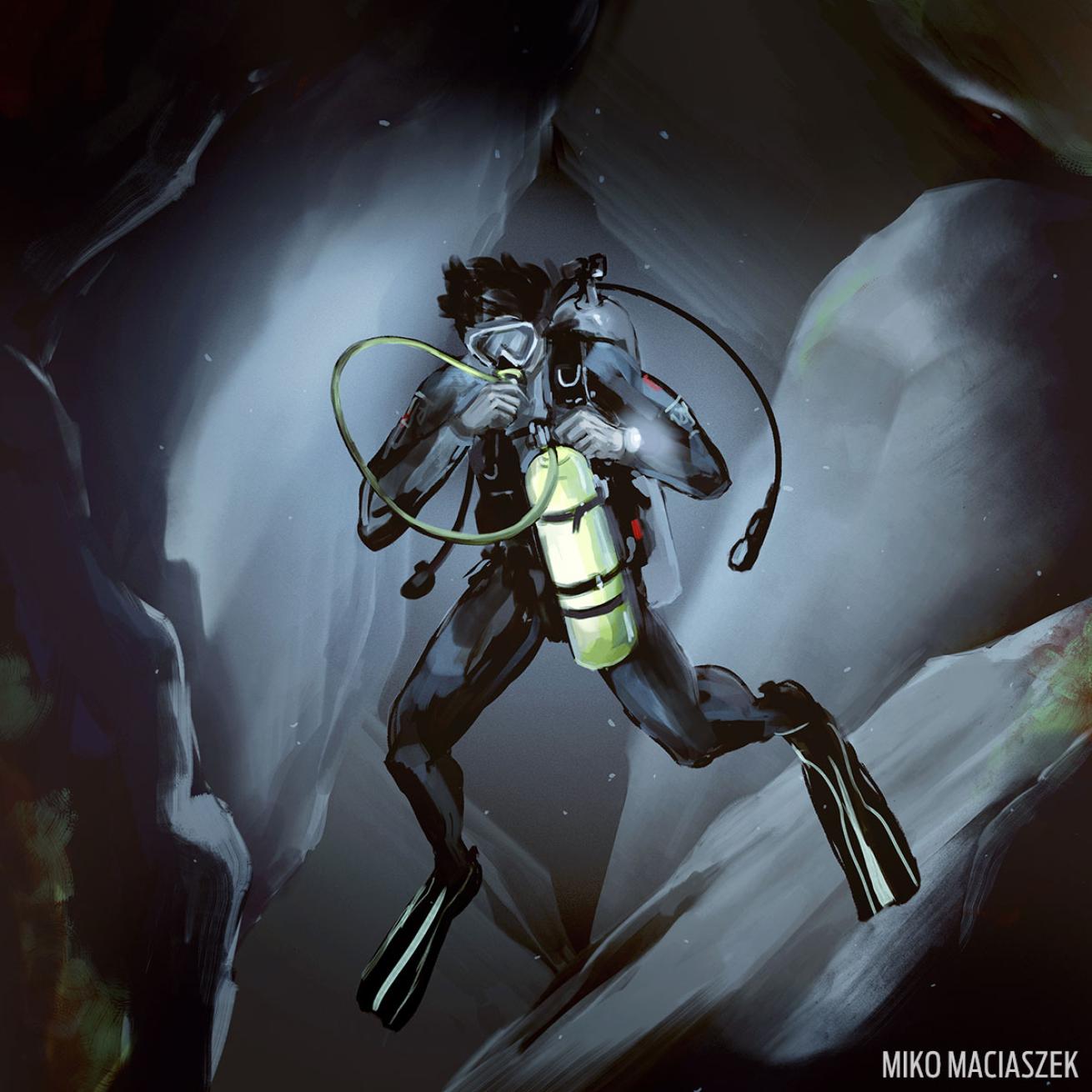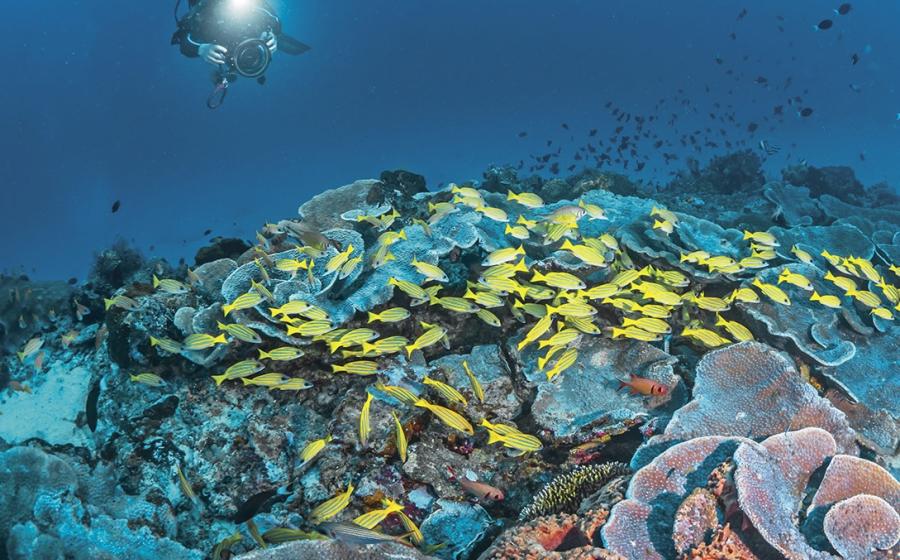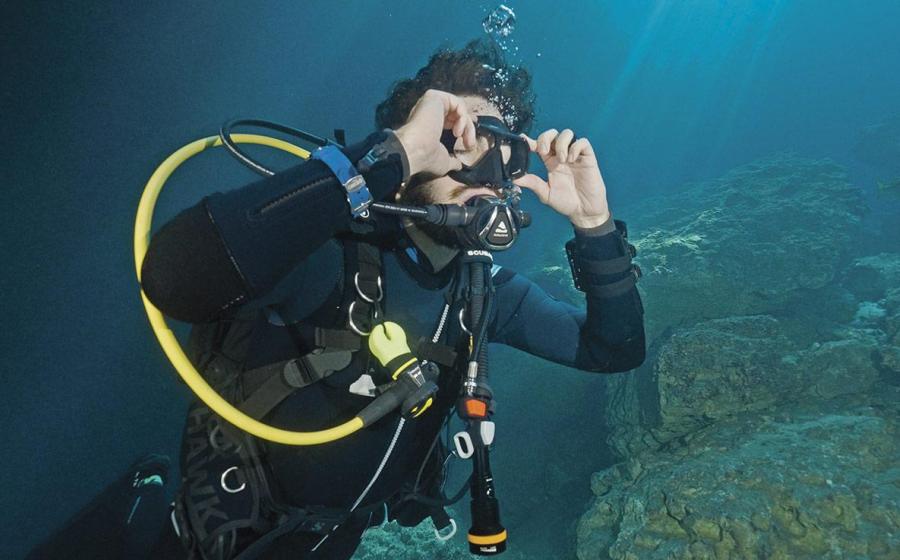Three Divers Enter a Cave But Only Two Make It Out
Three buddies push their training and venture deep into a cave; only two make it out.
DEATH TRAP
Phil couldn’t believe the mess he’d made of this dive. He was glad his buddies, Rex and Evan, had brought their pony bottles with them. When he ran out of air deep inside the cave, Rex donated his reserve tank to Phil. Phil knew he would have died without it.

Miko MaciaszekCavern-diving certification is a great introductory class that teaches divers how to improve their buoyancy control.
Phil followed his buddies to the surface. He swam behind them because he needed to get control of his breathing. He knew that his friends would be waiting for him, and that he owed Rex big-time for giving up his pony bottle. And then it got hard to draw a breath from the reserve tank.
THE DIVER
Phil was a 34-year-old experienced scuba diver who held advanced open-water and cavern-diving certifications. He lived close to an expansive freshwater cave system that offered pristine water and interesting diving. Though he enjoyed taking the cavern-diving class, he never took the next step toward pursuing a full cave-diving certification. From his perspective, there wasn’t much difference, except for the cost.
THE DIVE
Phil, Rex and Evan arrived at the dive site on a warm, clear morning. They set up on a single air tank; they each had a separate pony bottle they planned to use at the safety stop at the end of the dive. They didn’t discuss a plan for the dive, except they all intended to explore inside the cave system, even though they lacked the proper certification and gear. The three friends entered the water by climbing down to a set of stairs and then floated out into the crystal-clear water. Phil hated having the extra tank clipped to his BC, so he decided to leave his own spare tank outside the cave entrance. He planned to use it for his safety stop, so he reasoned it would be ready for him when he got back.
In the meantime, he could enjoy not having the additional drag. The three divers began exploring the cavern, still within the light zone, but quickly moved off inside the cave system, where they were totally dependent on their underwater lights.
THE ACCIDENT
The three divers took their time exploring the cave system. They were nearly 200 feet inside the cave when Phil took a breath from his regulator and nothing came out. The buddies were close together, but it took Phil a few moments to get Rex’s attention. Once he realized what was happening, Rex quickly gave Phil his pony bottle. Once they helped calm Phil, Rex and Evan headed toward the exit. Their own air tanks were nearly empty and they had only one pony bottle as a reserve. Phil’s extra tank was back at the safety-stop point, so they would have reserve air to breathe once they exited the cave — but they had to reach it first.
Once the trio turned the dive, Phil signaled that he would follow behind his buddies. Rex and Evan didn’t realize that Phil was missing until they reached the safety stop. A recovery team brought his body out of the cave later that day. His death was declared a drowning due to entrapment in a cave with an exhausted gas supply.
ANALYSIS
Cavern-diving certification is a great introductory class that teaches divers how to improve their buoyancy control. Staying off the bottom inside a cavern is extremely important to avoid stirring up silt and reducing visibility. This is key, from both a sightseeing perspective and a safety standpoint. In cavern diving, you also learn about cave systems and get an introduction into the techniques necessary to explore further, including following lines and using underwater lights. However, cavern diving does not certify you to enter a cave system or qualify you to explore them.
Cavern diving is limited to a maximum of 130 linear feet from the surface. This includes depth and horizontal penetration inside the cavern. Another critical restriction in cavern diving is that you must remain within sight of the exit. You should always be able to see the sun through the entrance to the cavern. Any time you move outside that natural light zone, you are in a cave environment.
Cave divers always carry at least three lights, and sometimes four. Cavern divers carry two lights and use daylight as a third. As a cavern diver, you can always exit the cave system by swimming toward the daylight. Diving in a cavern at night is not an option for this reason. A key rule in cave diving is breathing-gas management. In a cave, you cannot make a direct ascent to the surface, so you must have adequate breathing-gas supplies to get out of the cave. Cave and cavern divers typically follow the rule of thirds. This means they use one-third of their air for the cave penetration, one-third on the way out, and keep the final third in reserve in case a problem arises.
In Phil’s case, he violated every rule of cavern certification. He moved beyond the light zone into a full cave setting. The trio were nearly 200 feet inside the cave when Phil ran out of air, exceeding the 130-foot maximum. It wasn’t a factor in this accident, but he carried only one light with him.
Most important, Phil didn’t manage his breathing-gas supply. If he had monitored his submersible pressure gauge, he would have realized he was low on air before he was completely out. He should have signaled his buddies when he was at two-thirds of his air supply and begun heading back for the surface. His buddies would have ended their own dives and headed out as well. Phil’s buddies brought their reserve tanks along with them, so they could account for that air supply in their overall calculation of their rule of thirds, but Phil chose to leave his pony bottle behind. At that point, he was limited to the 80 cubic feet of air on his back.
There is no way to know exactly what happened to Phil on the way out. It is likely he was still panicked and breathing heavily. His buddies were ahead of him, so it is possible he got lost. There was a line inside the cave, but he might have lost contact with it for some reason. If any of these things had happened, panic may have exacerbated his situation. Regardless, for the second time on the same dive, Phil ran out of air. This time, however, there was no one there to help him.
Running out of air inside a cave — or in any overhead environment, for that matter — is easily avoidable. You have to continually monitor your breathing- gas supply and turn the dive when you reach your planned limit. If you have 3,000 psi of air with you, that means when you hit 2,000 psi, your dive is over. Some cave divers use different calculations on their turn pressure and gas reserves, but they are all more conservative than the rule of thirds, not less. A cavern-diving certification is an important first step to exploring the unique environment of submerged cave systems, but it is not the same as being a cave diver.
Lessons for Life
1) STAY OUT OF CAVE SYSTEMS unless you are properly trained and equipped to be there. There is no worse way to die than watching your pressure gauge drop to zero.
2) PLAN YOUR DIVE and dive that plan, especially in overhead situations. Practice for emergency situations.
3) IF YOU PLAN TO LEAVE DECOMPRESSION/SAFETY STOP breathing gas outside a cave or overhead system, you must plan the dive based on the gas you are carrying with you. If it isn’t with you, it doesn’t factor into your rule-of-thirds calculation.
Eric Douglas co-authored the book Scuba Diving Safety, and has written a series of adventure novels, children’s books, and short stories — all with an ocean and scuba diving theme. Check out his website at booksbyeric.com and follow him on Facebook at facebook.com/EricDouglasAuthor.










